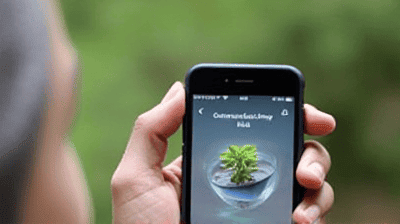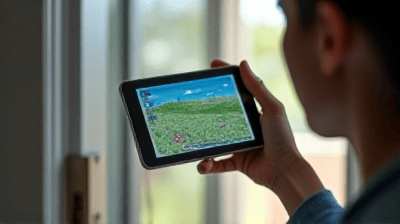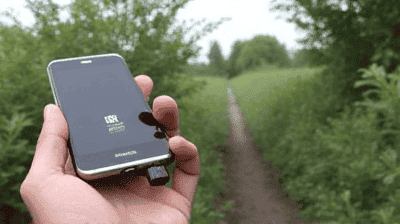
In our increasingly digital world, smartphones have evolved beyond mere communication devices. Equipped with advanced sensors and capabilities, these ubiquitous gadgets have the potential to transform ordinary citizens into powerful environmental data collectors. By harnessing the technology at our fingertips, we can gather crucial data on air quality, water quality, noise levels, and more, empowering communities to address environmental challenges effectively.
Smartphones have come a long way since their inception. Modern smartphones are equipped with a variety of sensors, including:
GPS Sensors: Allowing for precise location tracking, which is essential for environmental data collection throughout different geographical areas.
Microphones: Capturing sound levels and identifying noise pollution in urban environments.
Cameras: Facilitating visual data collection, including images of pollution, biodiversity, and environmental conditions.
Air Quality Sensors: Some smartphones are now being equipped with sensors that can measure air quality parameters like particulate matter and volatile organic compounds.
Accelerometers and Gyroscopes: Enabling movement tracking, which can be particularly useful for measuring exposure to environmental conditions during outdoor activities.
Citizen science refers to the involvement of the general public in scientific research and data collection efforts. The rise of smartphone technology has made it easier than ever for individuals to participate in environmental monitoring, contributing valuable data that was previously only collected by trained scientists. This shift empowers citizens, fosters environmental awareness, and promotes community engagement in addressing pressing ecological issues.

Environmental challenges such as air pollution, water contamination, and habitat loss are critical issues that require accurate data for effective intervention. Here are a few reasons why environmental data collection is essential:
Public Health Monitoring: Tracking environmental factors can help identify risks related to air and water quality, enabling timely public health interventions.
Resource Management: Accurate data on natural resources, such as freshwater availability and biodiversity, aids in sustainable management and conservation efforts.
Policy Development: Policymakers rely on robust data to formulate evidence-based environmental regulations and allocate resources effectively.
Community Activism: Citizen-collected data can serve as a powerful tool for advocacy, enabling communities to demand action on local environmental issues.
Education and Awareness: Engaging citizens in data collection raises awareness of environmental issues and fosters a culture of stewardship and responsibility.
A range of mobile applications leverages smartphone sensors to enable users to collect environmental data. Below are some notable examples:
iNaturalist: This app empowers users to document biodiversity by uploading photos of plants and animals. The community can help identify species, contributing to a global database of biodiversity observations.
Air Quality Apps: Apps such as AirVisual and Plume Labs’ Air Report allow users to monitor air quality in real-time, utilizing smartphone GPS and local air quality data to inform users about current conditions.
Water Quality Monitoring: Apps like Water Reporter enable citizens to report water pollution incidents using their smartphones, providing real-time data to local authorities and organizations.
Noise Level Measurement: Apps such as Decibel Meter utilize the smartphone microphone to measure environmental noise levels, helping identify areas affected by noise pollution.
Climate Tracking: Apps like Climate App allow users to understand their personal carbon footprints and track actions to reduce greenhouse gas emissions.
Citizen scientists can collaborate with researchers and environmental organizations to enhance the credibility and applicability of the data collected. These collaborations can take several forms:
Data Sharing Platforms: Platforms like Zooniverse connect citizen scientists with researchers looking for help in data collection and analysis. Volunteers can contribute to various projects, from analyzing wildlife patterns to monitoring air quality.
Community Science Programs: Local organizations often develop community science initiatives that encourage residents to participate in specific data collection efforts, providing training and resources to ensure effective monitoring.
Public Campaigns: Collaborations with governmental or non-governmental organizations can help raise awareness about environmental issues and encourage community participation in data collection campaigns.

Getting started with environmental data collection using your smartphone requires a few essential tools:
Focus on a specific environmental issue that you find compelling, such as:
By concentrating on a particular area, you can become more knowledgeable and effective in your data collection efforts.
Follow these steps to effectively gather environmental data using your smartphone:
After collecting data, the next step is to analyze and interpret the findings:
Sharing your data is essential for community awareness and advocacy. Here are several ways to share your findings:
Armed with data, you can become an effective advocate for environmental change in your community:
While smartphone sensors and apps empower citizen scientists, several challenges and considerations must be addressed:
One of the primary concerns with citizen-collected data is its reliability. DIY testing may not always match the accuracy of professional monitoring efforts. To enhance reliability:
Sharing location or environmental data may raise privacy concerns. Always be mindful of how and where you share your information:
Promoting community engagement in environmental monitoring can be challenging. To increase participation:
Not everyone has access to smartphones or the internet. Addressing this digital divide is essential for inclusive citizen science:

As technology continues to advance, the potential for smartphones in environmental data collection is likely to grow. Innovations to look for in the upcoming years include:
Future smartphones may be equipped with even more sophisticated sensors that can measure a wider range of environmental variables, such as:
Integrating AI capabilities within mobile applications can enhance how data is analyzed and interpreted:
The growth of digital platforms may facilitate expanded collaborations among citizen scientists, researchers, and policymakers:
Technological advancements can lead to better educational tools for promoting environmental awareness and data collection skills among citizens, especially younger generations:
The proliferation of smartphone technology has the potential to turn everyone into a capable environmental data collector. Through the effective use of sensors and mobile applications, everyday citizens can make meaningful contributions to environmental monitoring efforts, fostering awareness and advocating for positive change within their communities.
By empowering individuals to track pollution, participate in citizen science, and advocate for better environmental policies, we can collectively make strides toward a healthier planet. The combination of technology and grassroots engagement offers a promising pathway to address environmental challenges and protect our natural resources for future generations.
As we move forward in the journey of environmental stewardship, every individual's voice and participation become invaluable. So, pick up your smartphone, download the right apps, and start exploring the world around you—together we can create a cleaner, greener, and more sustainable future.